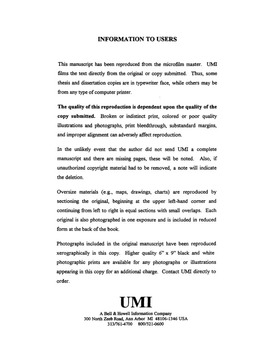| dc.contributor.advisor | Pigott, John, | en_US |
| dc.contributor.author | Ibrahim, Abdelazim Abuzeid. | en_US |
| dc.date.accessioned | 2013-08-16T12:30:25Z | |
| dc.date.available | 2013-08-16T12:30:25Z | |
| dc.date.issued | 1998 | en_US |
| dc.identifier.uri | https://hdl.handle.net/11244/5760 | |
| dc.description.abstract | Offshore northern Red Sea salt basins are dominated by complex halokinetic features and variable seafloor topography. The resulting severe imaging distortions observed on seismic profiles from these basins mask the salt and subsalt structures and create uncertainty in structural interpretation and definition of hydrocarbon prospects in this region. 2-D seismic models are used to investigate the causes and effects of image distortions observed on seismic lines from the study area. The modeling reveals five discrete causes: rugged seafloor topography, thick salt bodies varying in lateral geometry and exhibiting complex boundaries, rapid lateral velocity variations, intensive diffractions from faults and faulted block edges, and discrete lateral velocity anomalies from shallow reefal limestone and evaporite bodies. Through iteratively integrating both geological and geophysical data, an economic only feasible solution is presented to minimize these distortions and improve the imaging and structural interpretation of subsalt seismic events. The 2-D seismic modeling provides constraints in a form of raypath analyses, anticipates imaging problems, and narrowly constrains the range of acceptable interpretation. Post stack signal enhancement techniques are implemented to remove random noise, suppress water-related multiples, and reduce the deleterious effects of varying seafloor topography on the underlying reflections. Post stack migrations performed after using signal enhancement techniques significantly improve the seismic imaging and interpretation of salt and subsalt reflections. | en_US |
| dc.format.extent | xxiii, 302 leaves : | en_US |
| dc.subject | Seismic waves Data processing. | en_US |
| dc.subject | Salt tectonics Red Sea. | en_US |
| dc.subject | Image processing. | en_US |
| dc.subject | Geophysics. | en_US |
| dc.title | Iterative model-guided post stack seismic imaging and interpretation of halokinetic structures: Ras Banas area, offshore northern Red Sea. | en_US |
| dc.type | Thesis | en_US |
| dc.thesis.degree | Ph.D. | en_US |
| dc.thesis.degreeDiscipline | Conoco Phillips School of Geology and Geophysics | en_US |
| dc.note | Source: Dissertation Abstracts International, Volume: 59-12, Section: B, page: 6238. | en_US |
| dc.note | Major Professor: John Pigott. | en_US |
| ou.identifier | (UMI)AAI9914413 | en_US |
| ou.group | Mewbourne College of Earth and Energy::Conoco Phillips School of Geology and Geophysics | |
